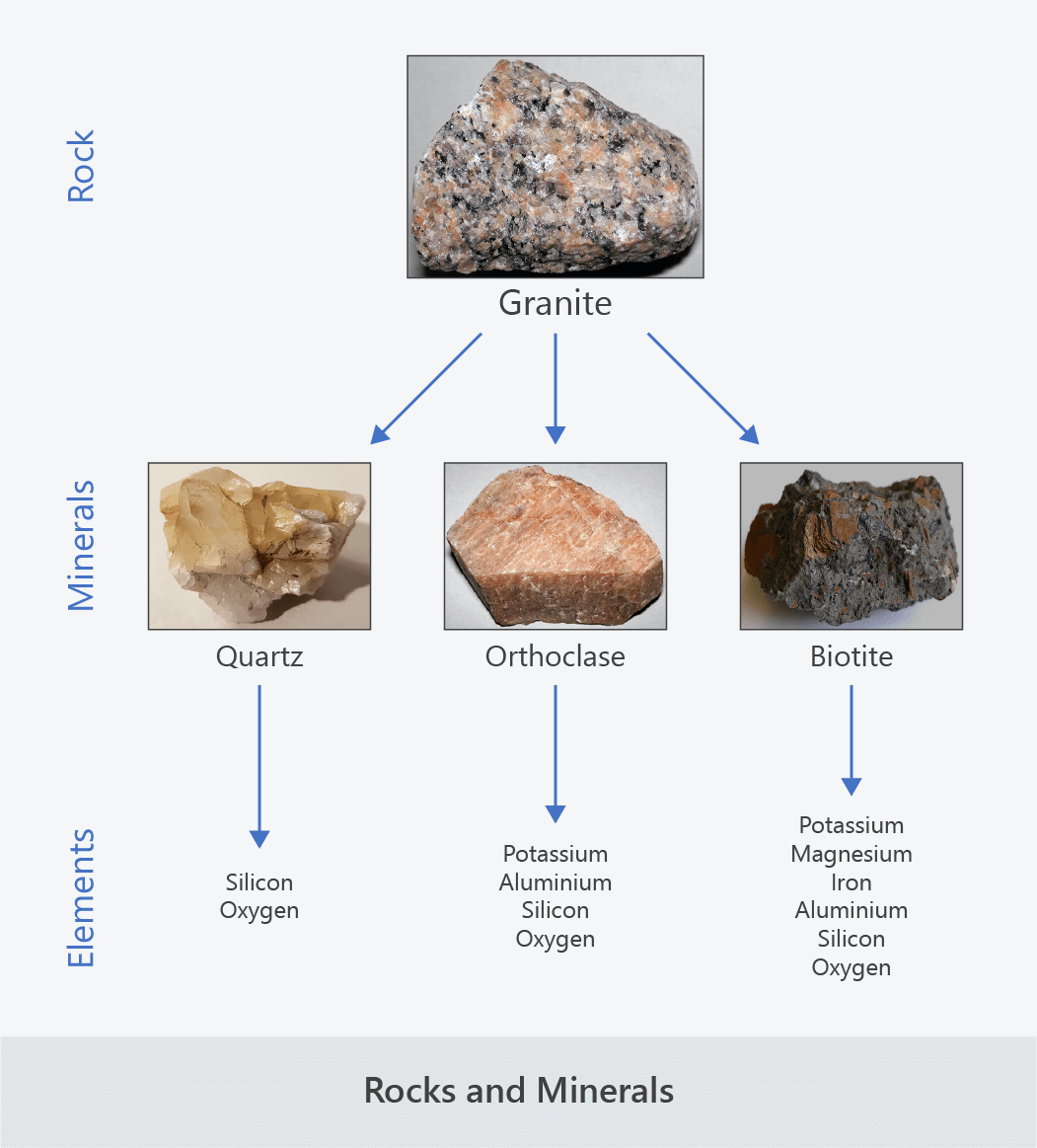2 | Minerals
Minerals
- A mineral is a naturally occurring solid substance with a defined chemical composition and crystalline structure.
- Minerals may consist of a single type of atom or they may contain two or more different types of atoms in a fixed arrangement.
- In other words, minerals may be elements or compounds.
- Examples of minerals that are elements include sulfur, gold and diamond.
- Examples of minerals that are compounds include quartz, calcite and halite.
- Minerals that are compounds are named differently to the chemical compounds they are composed of. There are several reasons for this.
- Firstly, it distinguishes minerals as naturally occurring forms of chemical compounds.
- For example, the mineral quartz is a naturally occurring form of the compound silicon dioxide (SiO2).
- Secondly, some compounds occur naturally with different crystal structures.
- For example, stishovite is also a mineral form of silicon dioxide, but with a different crystal structure to quartz.
- Thirdly, many minerals have complex molecular structures, where the types of atoms within them can vary.
- For example, the mineral olivine has a variable composition represented by the general molecular formula (Mg,Fe)2SiO4. This formula shows that the proportions of magnesium (Mg) and iron (Fe) can vary.

Rocks are composed of minerals, which are naturally occurring elements or compounds with a crystalline structure.
(Images: James St. John, Wikimedia Commons; Romaine, Wikimedia Commons; James St. John, Wikimedia Commons; Kritzolina, Wikimedia Commons)
Quizzes

